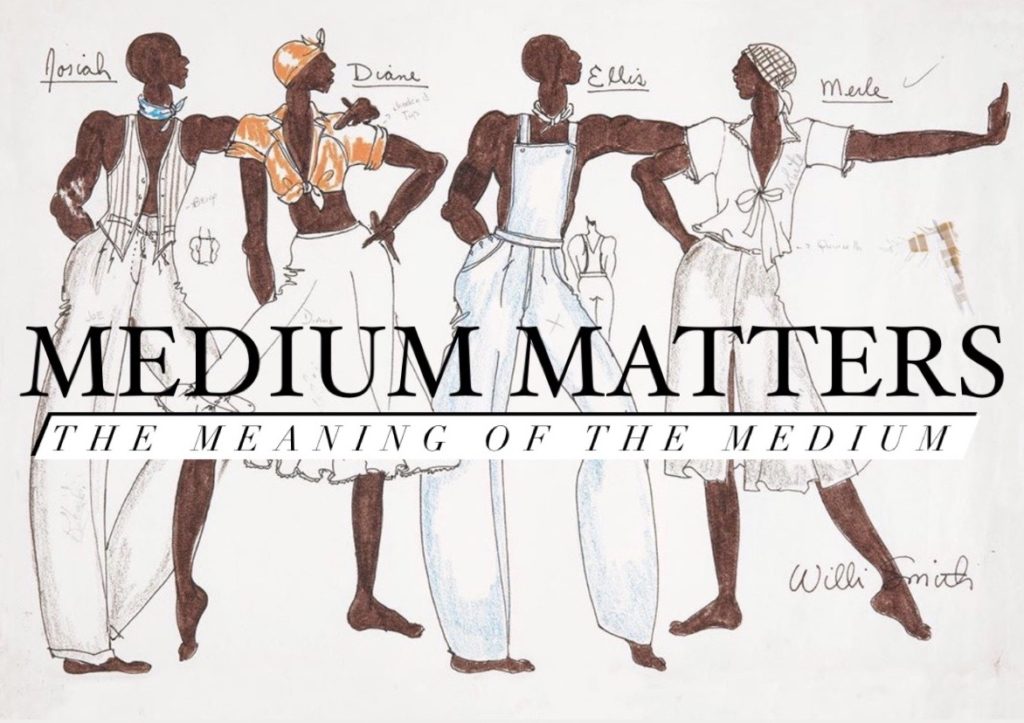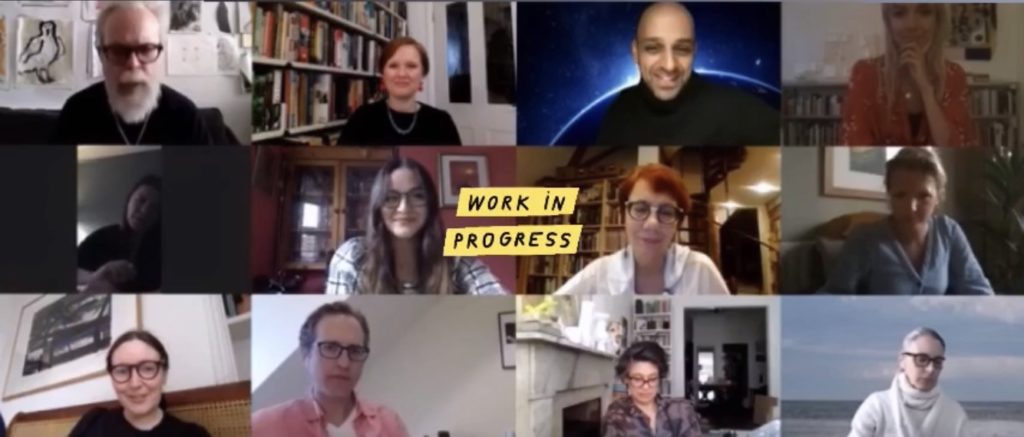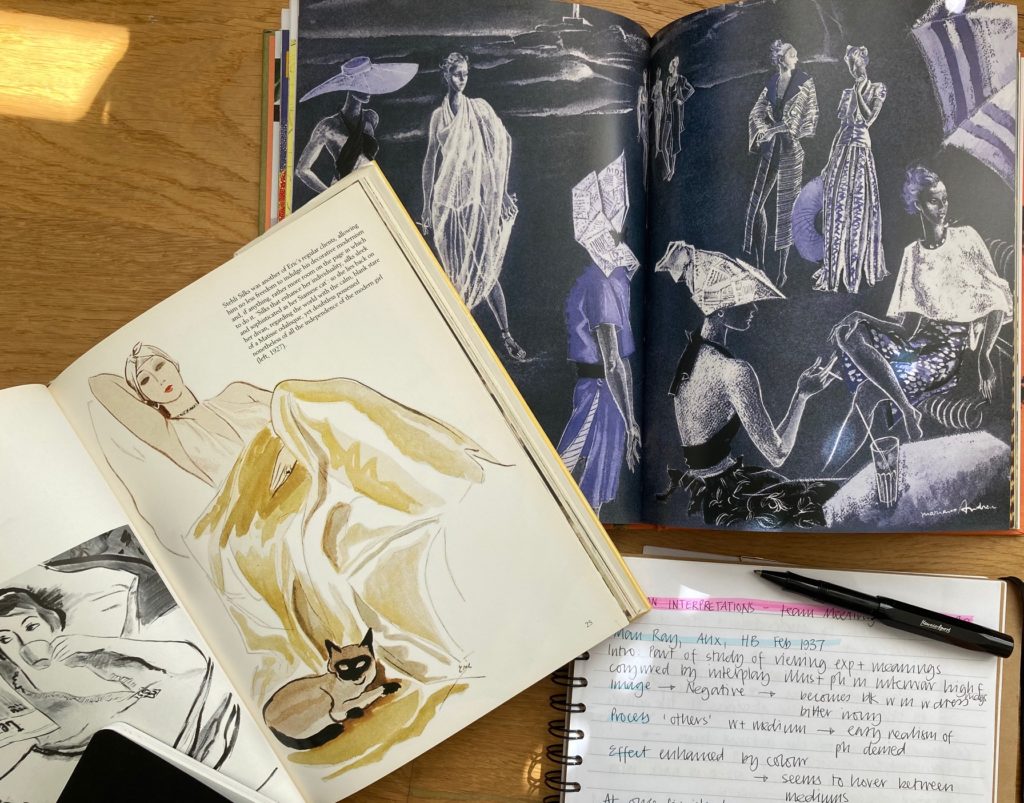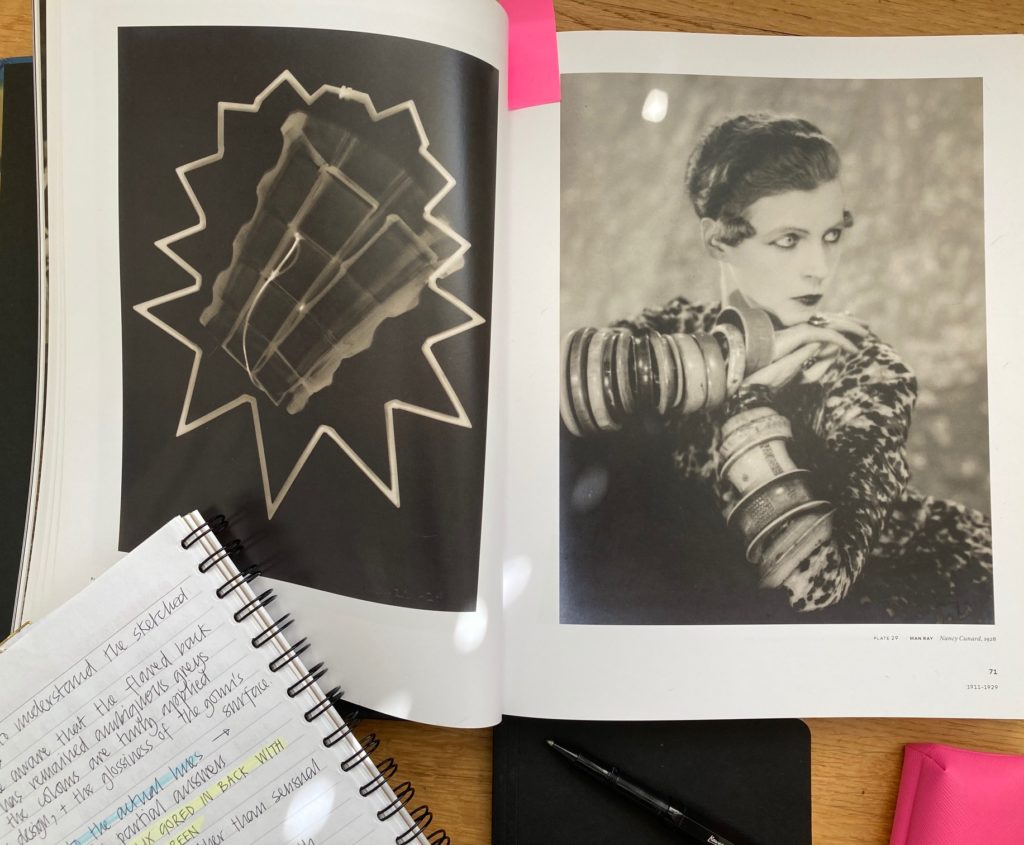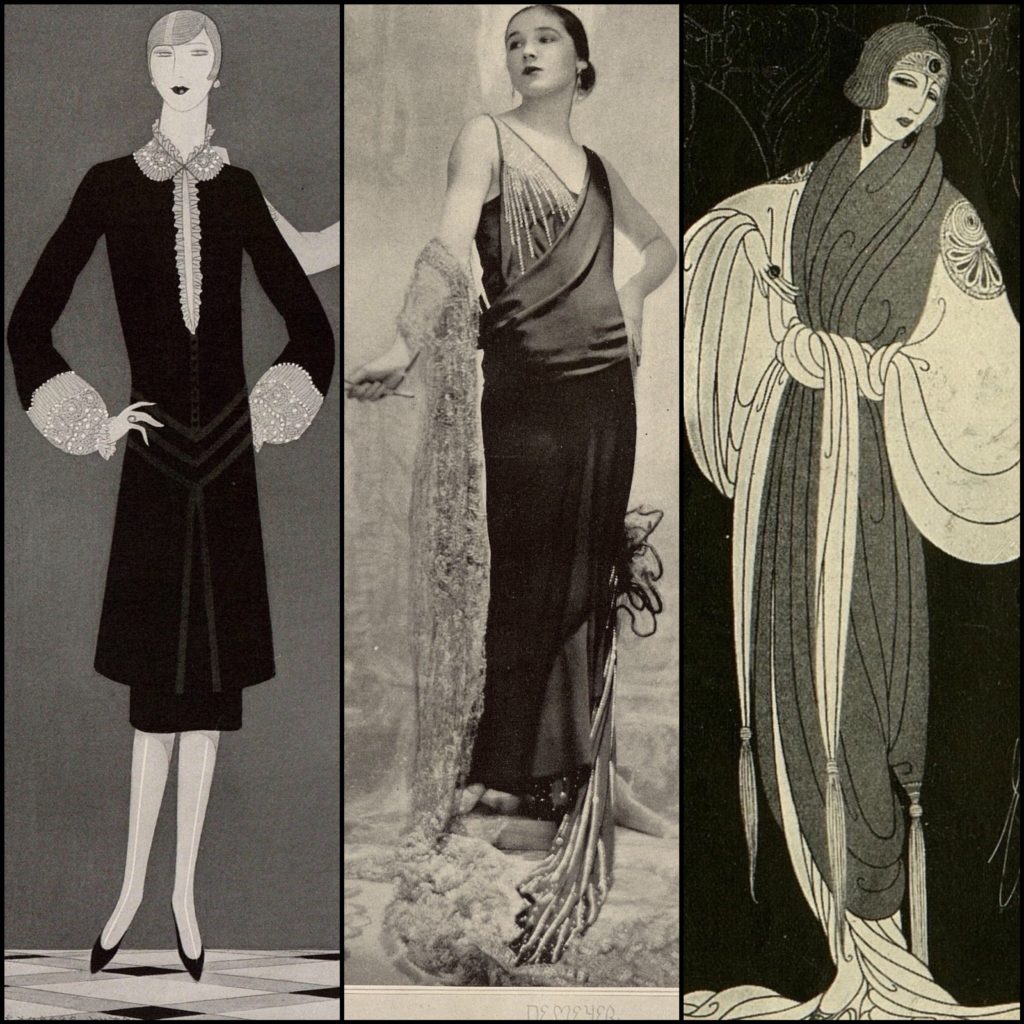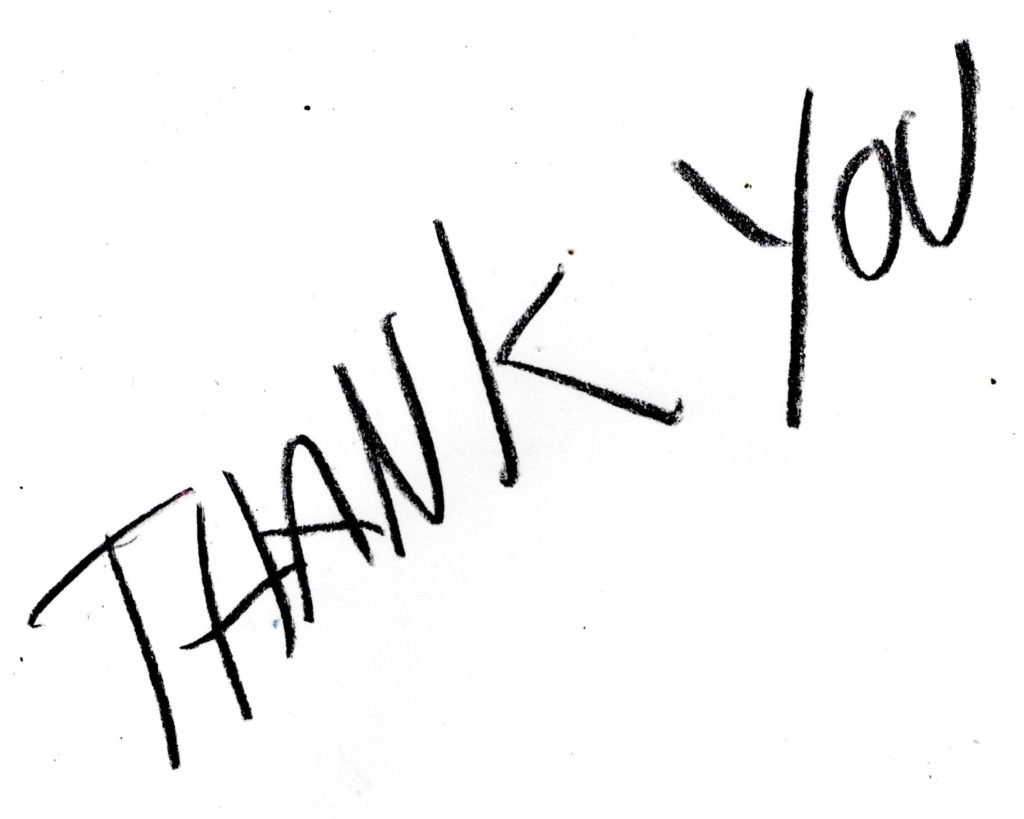
On 4th December, Fashion Interpretations reached its (almost) finale – with an online symposium split across five evenings. Each of the Network’s members discussed their contributions, allowing an international audience to see the fruits of our discussions and research over the last thirteen months.
What was most exciting, was to see the range of responses to our aim – seeking to understand the ways medium impacts fashion’s meanings. From academic papers, to life writing, to illustration, film and curation, we have all found new understandings of the significance of medium as a conduit for seeing, and as a way to explore consciously our own methods of working and creating.
Next month, the inaugural issue of Archivist Addendum will signal the end of the project, and the beginning of its life in as a new medium – with all our contributions collected together in this new publication that will itself cast our ideas in another form and enable us to share our ideas still further.
Working together has been an absolute treat, to be able to share and discuss, and think and talk about fashion from such different perspectives has been a hugely enriching experience and we hope this is just the beginning of a new series of collaborations and adventures together.
Thank you to Elisa, Charles, Lisa, Liz, Olga, Leanne, Roman, Richard, Dal and Jane for being so generous and open with your work and such a fantastic team – a true international network was born.
Thank you to Fran for being a wonderful Administrator, for creating our online presence and social media and keeping us all organised.
Thank you to Oliver, Eva, Ben, Olivia, Acatia and The Courtauld Research Forum for making sure everything ran smoothly.
And finally, thank you to everyone who subscribed, followed, liked and commented on our blog and Instagram, and to all those who attended our events and made such inspiring and thoughtful comments and questions.
It has been a complete joy,
Rebecca & Judith.
Go to The Courtauld’s YouTube channel to watch all five parts of our symposium & follow @archivistaddendum on Instagram for information on our publication.

